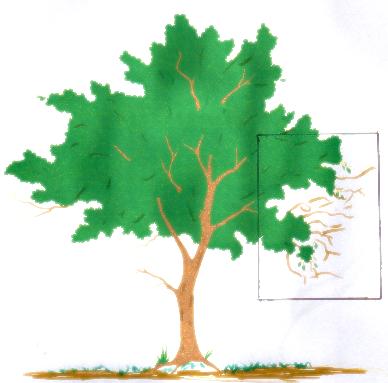 abc
abc
 abc
abc
Another
excercise for you to construct a Histogram and Normal Distribution curve and
to calculate the z-scores .
But for
this excercise we will use the SPSS program.
 In
the laboratory, an experiment is being constructed to test the resistance of
a newly developed Elm (Ulmus sp) cultivar to the fungus (Ceratocystis
sp) that causes Dutch Elm Disease.
In
the laboratory, an experiment is being constructed to test the resistance of
a newly developed Elm (Ulmus sp) cultivar to the fungus (Ceratocystis
sp) that causes Dutch Elm Disease.
There are 72 saplings under observation. All were innoculated on the same day
with a heavy dose of the fungal suspension.
The number of days until leaf symptoms appeared was recorded for each sapling...
|
43
|
45
|
53
|
56
|
56
|
57
|
|
58
|
66
|
67
|
73
|
74
|
79
|
|
80
|
80
|
81
|
82
|
84
|
89
|
|
97
|
99
|
100
|
102
|
102
|
104
|
|
107
|
109
|
109
|
109
|
112
|
113
|
|
114
|
115
|
115
|
116
|
118
|
121
|
|
121
|
123
|
128
|
133
|
137
|
137
|
|
137
|
138
|
139
|
139
|
145
|
146
|
|
150
|
156
|
160
|
162
|
163
|
164
|
|
174
|
178
|
179
|
184
|
186
|
191
|
|
198
|
201
|
209
|
211
|
214
|
222
|
|
234
|
240
|
249
|
251
|
266
|
270
|
SPSS open program>>>what do you want to do?
click 'type in data' (radio button)
type in the data as var00001 9 [You may wish to use 'varaible view' and give the data a proper name].
Analyse >>Descriptives
Tick box for standardised values as a variable (z-values)
Save
Now open the drop down menu Graphs >>Histograms
Double click var00001 to insert in variables window
Tick display normal curve box
Press OK.
Would you say that the standard deviation is large or small?
Given that this is the S.D for the sample, how will this compare with the S.D. for the population ? (hint: use n-1for a sample S.D and n for a population).
What would happen to the difference between these two S.D.values if the sample size was doubled from 72 to 144?
What would be the range (of values) for 68.3% of all our results?
What are the z-values for the trees that displayed symptoms after 104, 123, and 163 days?
Calculate the 95% confidence limits.
What criticisms might you make about the experimental design?